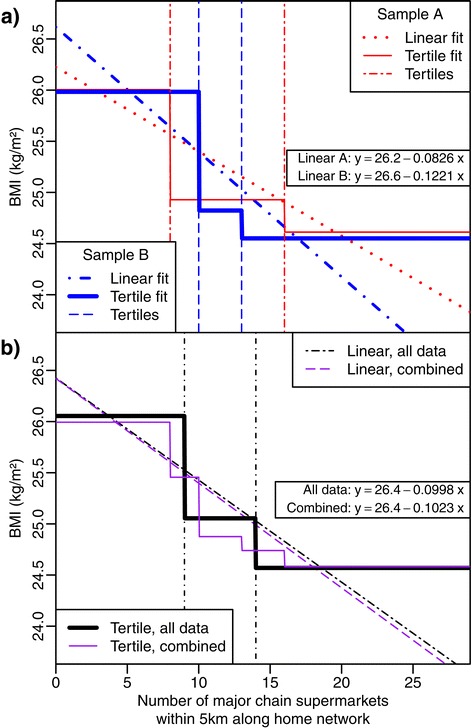Figure 1.

Illustrative example of the ‘trouble with tertiles’ predicting BMI using the count of supermarkets. We split the original SESAW dataset [3] (n = 1462) into two sub-samples, A and B, each with n = 500. (a) The sub-samples are analysed separately using a tertile approach and a linear model (with a single linear predictor and intercept, the linear fits are both significant and the coefficients are shown on the plot). (b) If we consider the two sub-samples as independent studies, it is then of interest to consider the combined estimate of the association between supermarket density and BMI. The combined sub-sample fits are obtained using standard meta-analysis methods (in essence, a weighted mean of the estimates accounting for sample size and standard errors); the combined fits are compared to the same analysis on the complete data. Of note, the combined tertile model no longer has three groups, there are now five groups, which complicates the interpretation. Conversely, the combined linear model retains the same interpretation.
